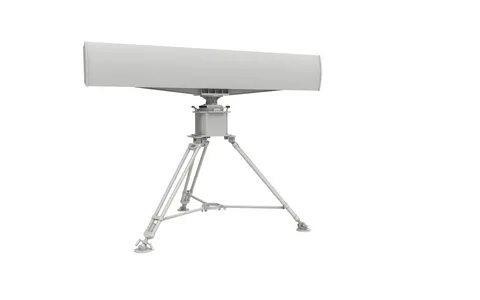Short-Range Air Surveillance Radar Market Soars as Threats, Innovation, and Investment Collide

According to the DataM Intelligence report Short-Range Air Surveillance Radar Market Size, Share, Industry Forecast & Outlook (2024-2031), the global short-range air surveillance radar market was valued at approximately USD 14.2 billion in 2024 and is forecasted to grow at a compound annual growth rate (CAGR) of about 12% through to 2032, reaching around USD 135.16 billion by that year. In 2025, the market is estimated to have further expanded, as defense, civil security, and counter-drone applications accelerate deployment of agile radar systems. These radars, capable of detecting low-altitude, small, or fast manoeuvring aerial threats, are becoming critical components in layered air defense and infrastructure protection strategies.
Download your Sample Report Instantly (Corporate Email ID required for priority access):
https://www.datamintelligence.com/download-sample/short-range-air-surveillance-radar-market?sv
Key Highlights & Insights
-
Product Segmentation: Key types include surveillance & airborne early warning radars, counter-drone radars, tactical radars, and others, differentiated by platform (land, naval, airborne), frequency bands (X-band, S-band, C-band, etc.), and operational range.
-
Application Drivers: Growing use cases include UAV/micro-drone detection, fighter/aircraft tracking, perimeter security for airports & critical infrastructure, maritime protection, and homeland security.
-
Regional Trends:
-
North America remains a strong market due to high military and homeland security investment.
-
Asia-Pacific is among the fastest-growing regions, owing to rising geopolitical tensions, increased defense modernization, and growing requirements in civil security domains.
-
Europe and Middle East also show strong interest in modular, mobile, and AI-enhanced radar solutions.
-
Recent Developments in 2025
-
The market’s expansion in 2025 has been confirmed by several sources, showing that global demand continues to climb in both defense and civil applications.
-
Several major technology and product innovations took place in 2025:
• Introduction of ultra-compact short-range radar systems optimized for urban environments with AI-driven target classification and tracking.
• Successful trials of radars with digital beamforming and GaN (Gallium Nitride)-based hardware to enhance detection of micro-drones and low-observable threats. -
Increased strategic collaborations and M&A activity: For instance, radar firms are forming partnerships for modular short-range radars, especially for counter-drone applications and mobile / tactical platforms.
-
Growing procurement activity, particularly in Asia-Pacific, with countries boosting defense budgets and indigenous production capacity for short-range air surveillance radar systems.
Strategic Outlook
To succeed in this dynamic environment, vendors, governments, and investors should consider:
-
Prioritizing R&D in AI/ML-based detection, clutter suppression, and false alarm reduction, as well as in hardware innovations (e.g. GaN, digital beamforming) to improve sensitivity and reduce size, weight, power, and cost.
-
Focusing on modular, mobile, and easily deployable radar systems for use in tactical, airborne, maritime, and UAV detection applications.
-
Enhancing domestic production capabilities in fast-growing regions to reduce reliance on imports and improve supply chain resilience.
-
Seeking certifications, interoperability, and product standardization to facilitate integration into broader air defense and civil security networks.
-
Expanding dual-use applications (defense + civil), such as infrastructure protection, airport security, border control, and counter-drone systems.
Conclusion
The Short-Range Air Surveillance Radar Market is entering a phase of rapid growth driven by rising threat perceptions, proliferation of drones, and growing demand for rapid detection and response capabilities. With a strong technological push in 2025, and as governments and industries commit to modernizing defense and security infrastructure, this market is well-positioned to hit new highs well before 2032. Regions like Asia-Pacific will likely lead in growth, while North America and Europe continue to innovate and push performance boundaries.
- الاقتصاد والتجارة
- فن
- كورسات
- الحرف اليدوية
- الطعام والشراب
- الألعاب والترفيه
- الصحة
- تكنولوجيا
- أخرى
- دين
- رياضة


